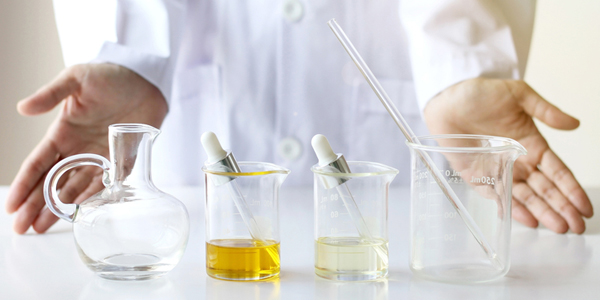This interview was originally published in Expression Cosmétique Guide des Ingrédients Cosmétiques 2018, p.28-30, www.editionsbgm.fr
The cosmetics industry and its upstream players are moving on with their transformation. Nikola Matic, Head of the Chemicals & Materials Department for Kline & Company, shares with us the main changes in the industry and the future trends.
Can you give us an update on the sales of ingredients in 2017?
In 2017, the market for cosmetic ingredients represented $22.7 billion, distributed as follows: $11.5 billion for commodities, $9.5 billion for specialties sold on the basis of their functional performance (emollients, surfactants, conditioning polymers, rheology agents, etc.), and, finally, $1.7 billion for active ingredients claiming an innovative concept and biological activity. Europe and the United States remain the two largest markets for the last two product categories.
What main trend did you observe in recent months?
With big names in cosmetics now stating their ambition to gain market shares on key growth markets, such as Asia, priority is giving to marketing teams. As a result, they rely more and more on manufacturers for the formulation and manufacturing activities. The trend is even greater in the U.S. market, with the arrival of new players, creators of concepts, but very limited or no expertise in formulation. A situation that is directly impacting raw materials suppliers: the strategic choice of ingredients in a formula, previously managed by brands, is gradually transferred to contract manufacturers, forcing them to change their commercial strategy.
What challenges will manufacturers face in the coming months?
The cosmetics market is changing fast. The so-called “classic” and historical brands must cope with the emergence of new challengers: small, independent, responsive, and creative brands. The challenge will be to be equally creative to meet changing consumer expectations. Two solutions will certainly emerge: the simplest one will be to acquire these independent brands, and the second is focused more on turnkey concepts, previously the exclusive preserve of private labels (PLs), to improve “time to market.”
Concerning allegations, what is your analysis of the latest trends on the protection of the skin against environmental aggressions?
Anti-pollution claims boosted the sales of natural antioxidants and film-forming agents, but they are often a rebranding of active ingredients already present in the supplier’s catalog. In my opinion, these claims, which are not backed by real scientific innovation, are ephemeral and not a long-term trend. Another subject that is all the buzz: the skin microbiome. It is certainly an interesting subject, but today, no brand can really describe the way it operates and propose appropriate solutions. If it is highly driven by sales of probiotics, I think that the discourse is too complicated for consumers and that there is a real risk of losing them. Conversely, claims focusing on original modes of action around neuro-cosmetics or epigenetics are more likely to grab their attention.
In your opinion, what will be the future avenues explored by manufacturers?
Since the revolution on botanical extracts in the 1990s and on biotechnologies in the 2000s, the cosmetics industry has since not experienced real technological advances representing a major shift in the sales of cosmetic raw materials. From this observation, several consequences are going to emerge: the tidal wave of green chemistry will continue with the development of eco-designed ingredients. In a context where CSR has become a point of differentiation for brands, the renewable carbon and biodegradability criteria for raw materials will become essential prerequisites. Finally, on the other side of the claims, it is very likely that allegations will become “more down-to-earth” and less focused on modes of action, focusing on the sensations and emotions offered by cosmetic products.
Data is based on Kline’s recently published report Personal Care Ingredients: Global Market Analysis, covering more than 200 ingredients used in cosmetic formulations across all key regional markets.

